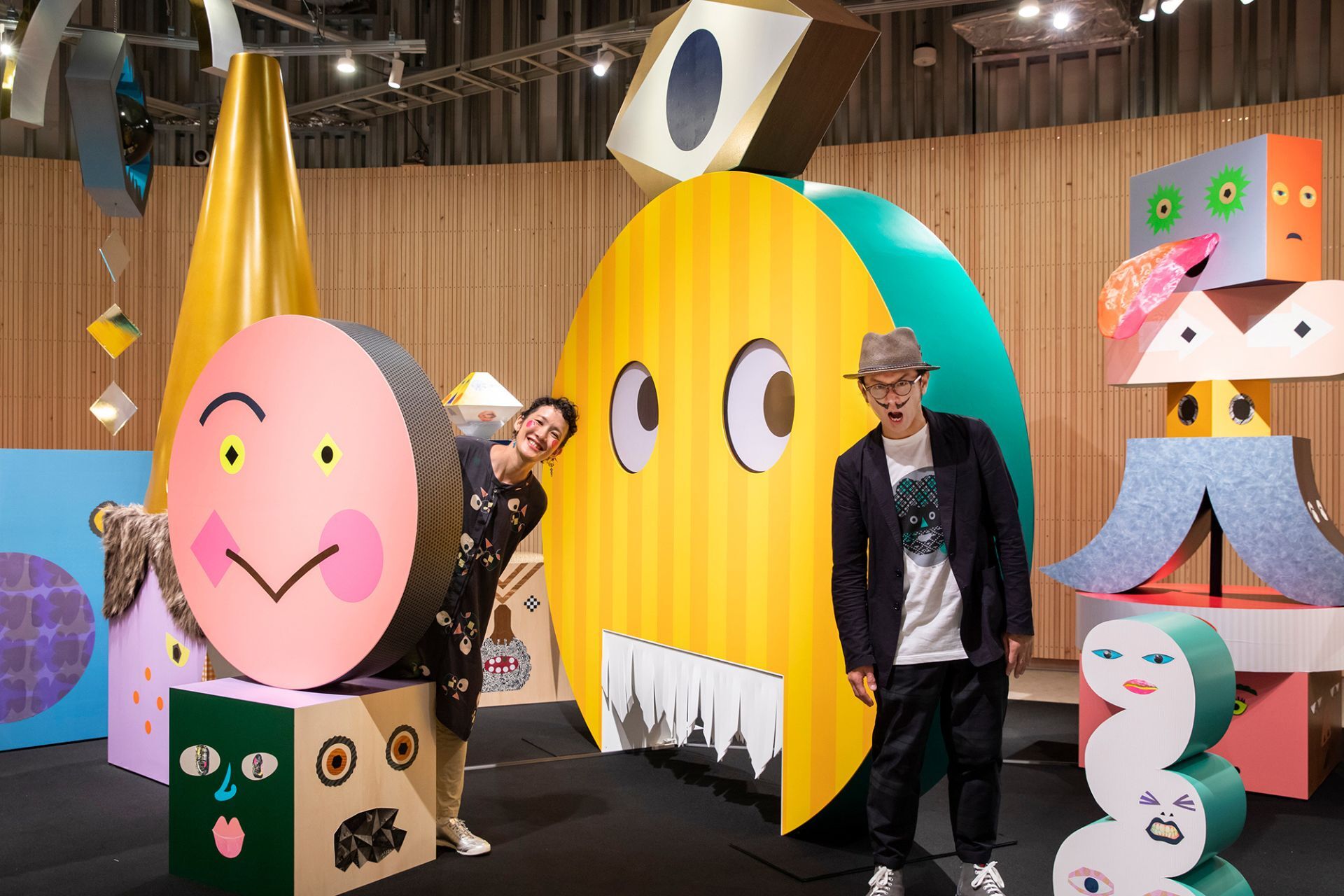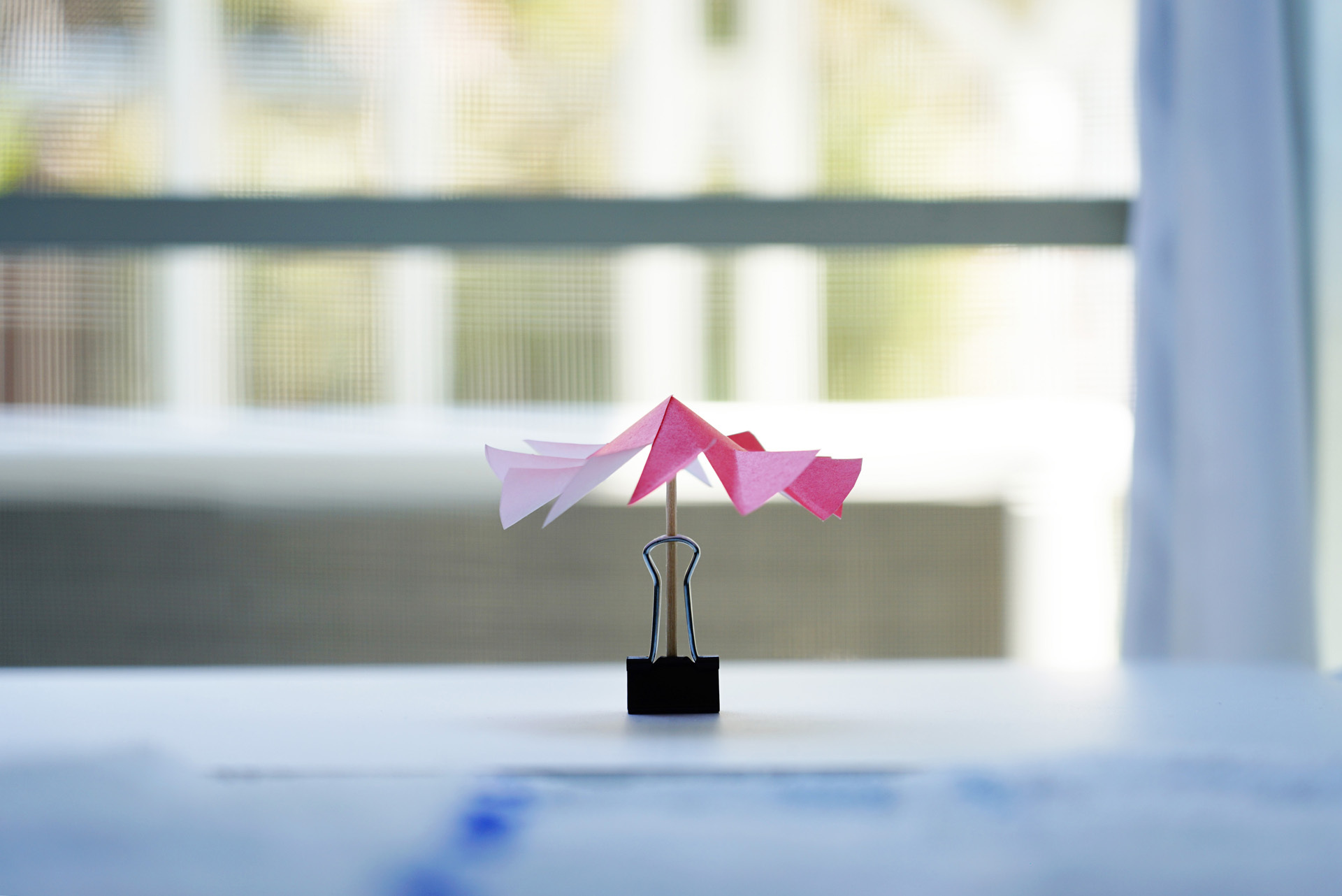Interview series by AWRD, a platform connecting creators and projects. It focuses on creators who have expanded their activities through the awards.
This time, we interview Claudia Pasquero and Marco Poletto of ecoLogicStudio, architects and designers based between London and Turin.
In recent years, they exhibited at the ”Future and the Arts: AI, Robotics, Cities, Life - How Humanity Will Live Tomorrow” exhibition at the Mori Art Museum, and at the ”crQlr Awards 2022” with their playroom 'Air Bubble', which uses algae to purify the air. They have been active globally towards a sustainable future, winning awards for biodesign and holding a solo exhibition in South Korea in 2023.
We asked them about their thoughts on the project and how they are tackling the air pollution problems faced by cities by combining architecture and biotechnology.
ーHow did you start your current activities?
We were in Turin, Italy, when we discovered the fields of technology, innovation, nature and computation. After moving to London to study architecture and engineering at the 'Architectural Association', we became interested in the idea of integrating architecture with biology and microbiology. Meanwhile, in the early 2000s, the world of 'digital technology' and 'computational technology' was exploding in the art and architecture scene. We were inspired by this intersection to understand and question the role of design in the creative process by introducing tools and techniques inspired by this intersection.
ーYour projects are also impressive in terms of the beauty of the output. Where do you get your design inspiration from?
Inspiration is drawn from spatial models constructed by early cybernetics researchers and from architectural structures from a time when computation had not yet been miniaturized. Examples include the architectural nilometers of ancient Egypt, the work of Leonardo da Vinci and the work of Gordon Pask.
Nature and their themed designs are also a very important source of inspiration for our projects, such as Air Bubble and H.O.R.T.U.S. XL Astaxanthin.g.
ー How did the idea for the Air Bubble come about?
The focus on the power of 'algae' was the beginning of Air Bubble. Algae have the ability to eat many air pollutants, absorb carbon dioxide and produce oxygen through photosynthesis.
Algae are ten times more efficient at re-metabolising atmospheric pollutants than other large plants, and can convert them into organic matter without producing waste by-products. Still growing rapidly, algae can adapt to a wide range of environmental conditions, making them suitable for deployment in all urban environments.

ーThe new project "𝐏𝐇𝐎𝐓𝐎𝐒𝐘𝐍𝐓𝐇𝐄𝐓𝐈𝐂𝐀 𝐂𝐎𝐋𝐋𝐄𝐂𝐓𝐈𝐎𝐍 𝐁𝐘 𝐄𝐂𝐎𝐋𝐎𝐆𝐈𝐂𝐒𝐓𝐔𝐃𝐈𝐎: 𝐁𝐢𝐨𝐩𝐡𝐢𝐥𝐢𝐜 𝐝𝐞𝐬𝐢𝐠𝐧 𝐩𝐫𝐨𝐝𝐮𝐜𝐭𝐬 𝐟𝐨𝐫 𝐜𝐨𝐥𝐥𝐞𝐜𝐭𝐢𝐯𝐞 𝐜𝐲𝐛𝐞𝐫-𝐠𝐚𝐫𝐝𝐞𝐧𝐢𝐧𝐠” What can you tell us about 𝐠𝐚𝐫𝐝𝐞𝐧𝐢𝐧𝐠?
PhotoSynthetica was initiated to address the negative impacts of climate change and air pollution on cities.
The collection consists of three biophilic design products: a desktop biotechnological air purifier (AIReactor), a compostable stool and a 3D-printed jewelry made from metabolized pollutants (Bio-Digital Ring). and is a tool to initiate a collective process of urban re-metabolization.
ーHow did this project come about?
There are several reasons behind the initiation of this project, one of which is to expand the scale of this collection so that it can be deployed in urban areas with severe air pollution and provide immediate benefits to densely populated areas.
PhotoSynthetica has the power to significantly improve air quality and promote cyclicality in urban environments.
By harnessing the air-purifying properties of algae, it effectively removes pollutants such as carbon dioxide and particulate matter from the air, thereby reducing air pollution levels. This has a positive impact on public health, including reducing the risk of health problems such as respiratory diseases and allergies.
In addition, cleaner air improves the overall quality of life and encourages outdoor activities, creating a more comfortable and livable urban environment for residents and visitors.
ーAre there any events or projects that have influenced you?
The anthropologist Gregory Bateson's book Steps to an Ecology of Mind was influential enough to inspire the name of our studio.
In the book, Gregory talks about a language other than the "language" we use in the fields we work in, a "meta-language" that we as humans cannot construct a fully ecological system.
ーWhat does meta-language mean?
When starting a project related to a recycling-oriented society, you can create a sheet in Excel and use formulas to express the project's energy and resource materials, etc. Such data in the form of numbers and codes is one of the "meta-languages".
However, to increase the value of the project itself, an Excel sheet is not enough. Therefore, a "meta-language" in the form of design and visual art is also necessary. For people to physically and intuitively interact with and immerse themselves in a design project, the beauty of the design is essential.
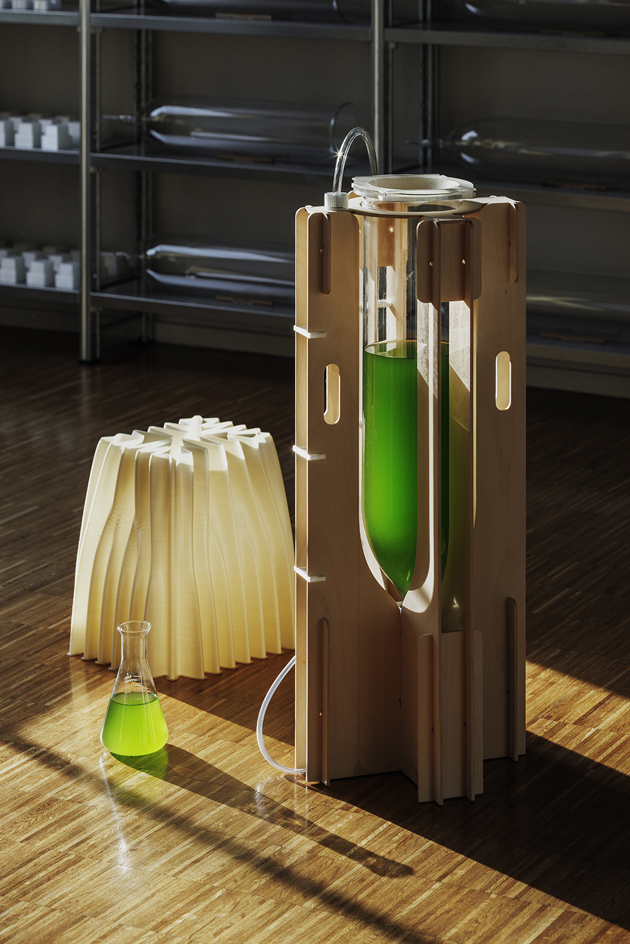
ーWhat do you value most in your daily production?
We try to focus less on "making something practical" and more on how to address the relationship between aesthetics and ecology in project development.
ーWhat do you think "architecture" should ultimately be in order to address the environmental issues facing our planet?
From an architectural and technical standpoint, we believe it is quite possible to incorporate some systems into the current building structure. The main obstacle we currently perceive is rather the idea of "production".
Modernism is characterized by isolating production from our living spaces and keeping us as urban dwellers away from interaction. However, there can be any number of other paradigms that take into account fungi and bacteria that normally affect our dirt and health. These fungi have amazing productive properties that allow them to metabolize some of the pollution we produce.
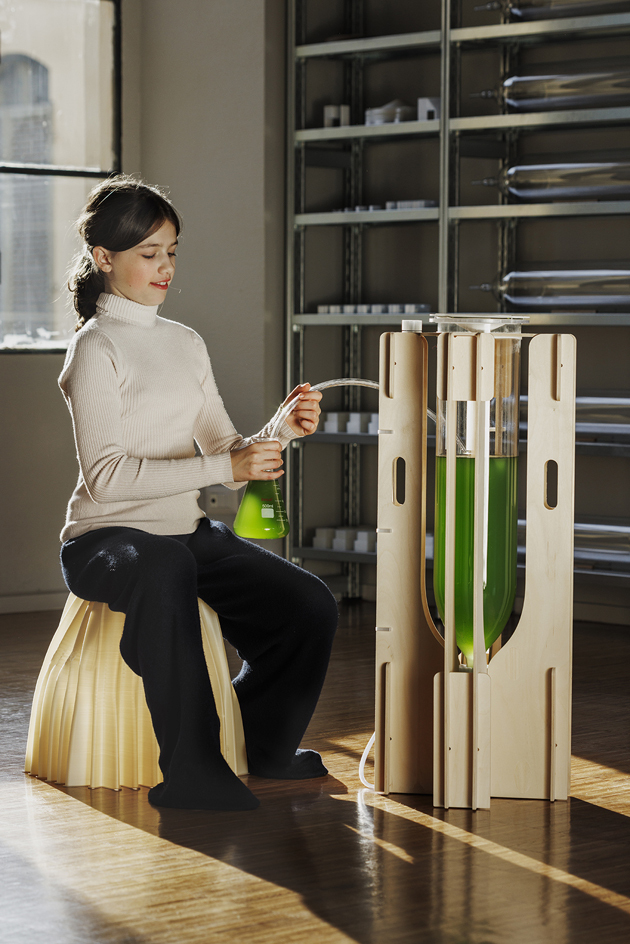
ーChanging the subject to the "crQlr Award 2022," what prompted you to apply?
We felt that the idea of "circularity" in the name of the awards is like the idea of circularity as design. We applied because we felt that the circular approach fits the concept of the "crQlr Awards 2022" as it affects all of our work.
We try to understand how nature works and how resources circulate within nature. And we strive to understand how these resources and the cyclical nature of resources can inspire new design styles. Of course, this is reflected in the beauty of our designs, but for us, the aesthetic element is a means of expressing a kind of deeper ecological intelligence in our projects.
ーDo you have a message for those who are considering applying for the upcoming "crQlr Awards"?
A beautiful or valuable design project today is one that embodies ecological intelligence. And it expresses the power to re-circulate materials and resources.
I believe that anyone who is interested in and wants to contribute to this kind of innovation should intrinsically engage with this idea of circularity. I think it makes a lot of sense to want to present your project in an award that celebrates ideas like the crQlr Awards.
I think a valuable and important aspect of this award is that it brings and celebrates the idea of circularity, which is central to the design process. I think the value of any design process today needs to address and celebrate this concept of circularity.
ーPlease let us know of any future activities or exhibition information.
A new location is being constructed in the Ex Mulini Feyles, a 1910s industrial building in the center of Turin. We are also planning an exhibition at the Louisiana Museum in Denmark.
If you are interested in our activities and concepts, please refer to our recently published book "Biodesign in the Age of Artificial Intelligence: Deep Green" for more information.
Profile: ecoLogicStudio
ecoLogicStudio is an architecture and design innovation firm specialized in biotechnology for the built environment. Co-founded in London in 2005 by Claudia Pasquero and Marco Poletto, the studio has built a unique portfolio of biophilic sculptures, living architectures and blue-green masterplans.
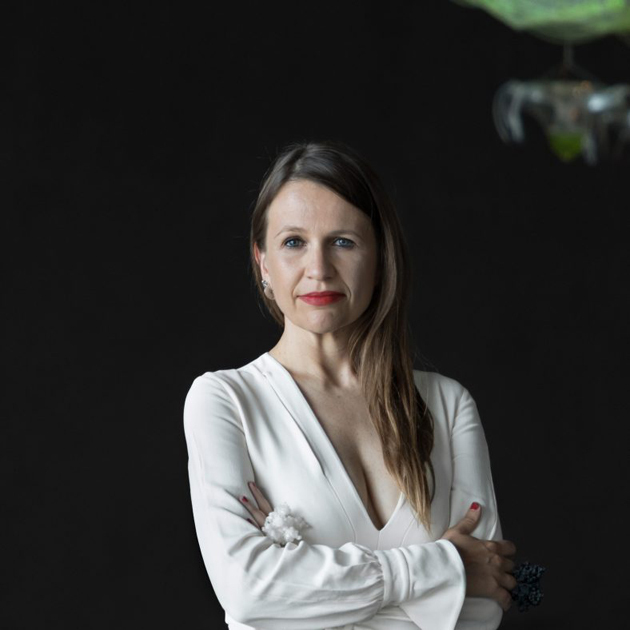
Claudia Pasquero
Claudia Pasquero is an architect, curator, author and educator; her work and research operates at the intersection of biology, computation and design.

Marco Poletto
Marco Poletto is an architect, educator and innovator. He is co-founder and Director of ecoLogicStudio and the Photosynthetica consortium.
Links
Website:
https://www.ecologicstudio.com/


